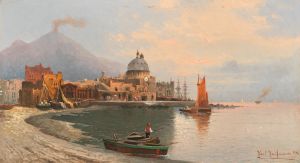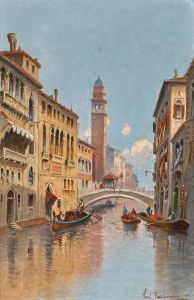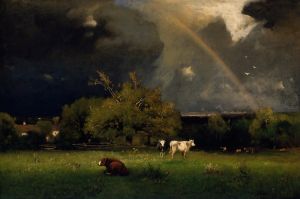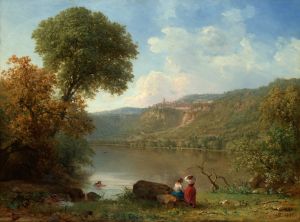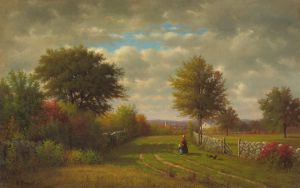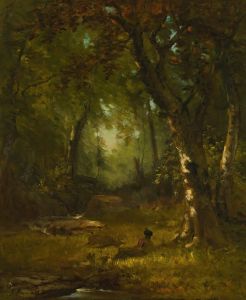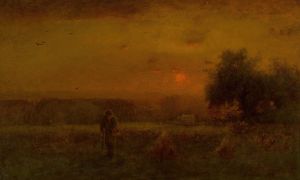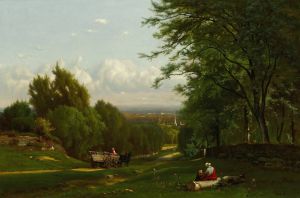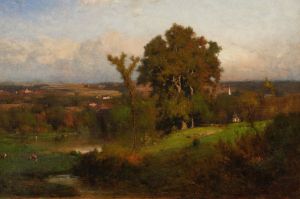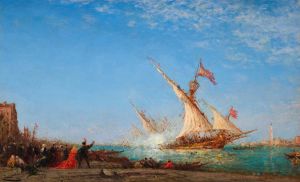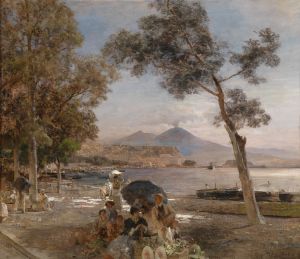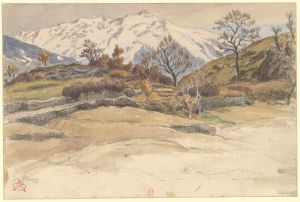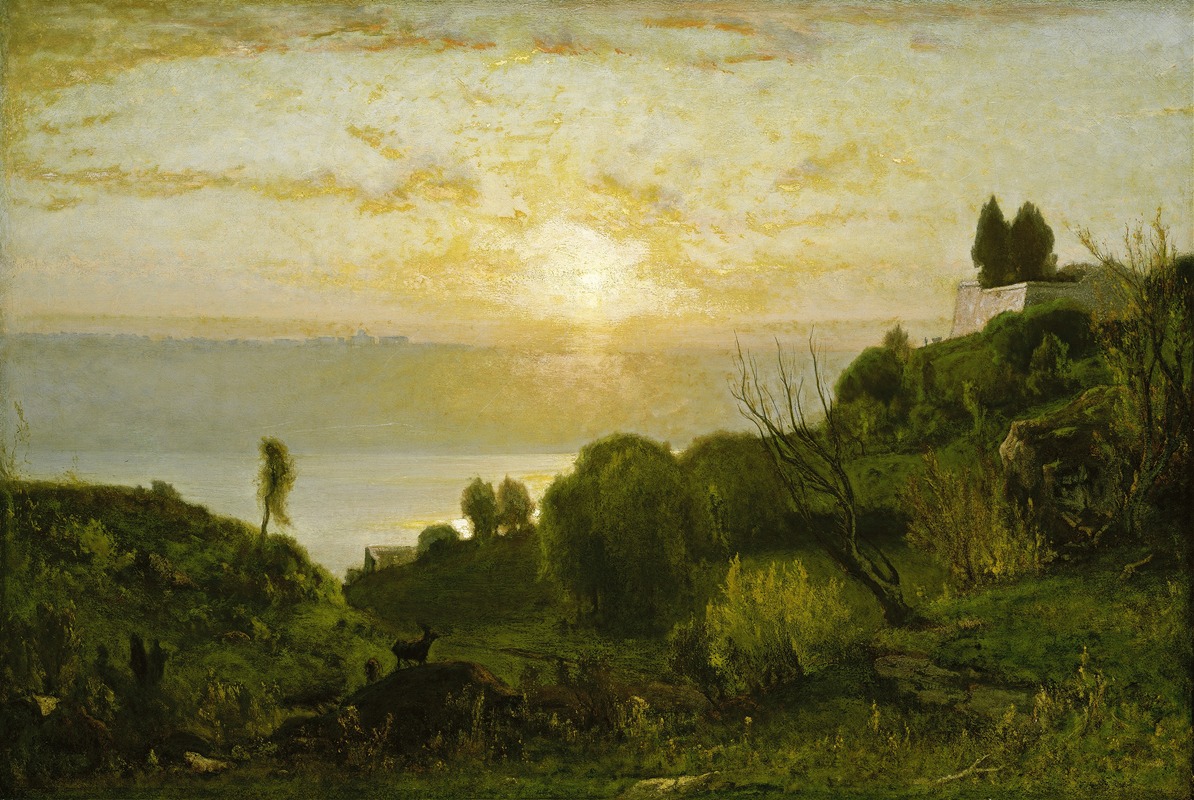
Lake Albano
A hand-painted replica of George Inness’s masterpiece Lake Albano, meticulously crafted by professional artists to capture the true essence of the original. Each piece is created with museum-quality canvas and rare mineral pigments, carefully painted by experienced artists with delicate brushstrokes and rich, layered colors to perfectly recreate the texture of the original artwork. Unlike machine-printed reproductions, this hand-painted version brings the painting to life, infused with the artist’s emotions and skill in every stroke. Whether for personal collection or home decoration, it instantly elevates the artistic atmosphere of any space.
George Inness (1825–1894) was a prominent American landscape painter known for his contributions to the Tonalist movement, which emphasized mood and atmosphere in landscape painting. One of his notable works is "Lake Albano," a painting that exemplifies his mature style and mastery of capturing the subtleties of nature.
"Lake Albano" was painted in 1869 during Inness's second trip to Italy, a period that significantly influenced his artistic development. The painting depicts Lake Albano, a volcanic crater lake located in the Alban Hills of Italy, southeast of Rome. This region was a popular destination for artists of the time, offering picturesque landscapes and a rich historical backdrop.
Inness's "Lake Albano" reflects his deep appreciation for the Italian landscape and his ability to convey the serene and contemplative qualities of nature. The painting is characterized by its soft, diffused light and harmonious color palette, which are hallmarks of Inness's Tonalist approach. He often employed a technique that involved layering thin glazes of paint to achieve a luminous effect, allowing the viewer to experience the atmospheric conditions of the scene.
The composition of "Lake Albano" is carefully balanced, with the tranquil waters of the lake occupying the foreground and gently leading the eye towards the distant hills and sky. Inness's use of light and shadow creates a sense of depth and dimension, inviting the viewer to immerse themselves in the peaceful setting. The painting captures a moment of quiet reflection, evoking a sense of timelessness and tranquility.
Inness was heavily influenced by the French Barbizon School, which emphasized naturalism and the depiction of rural landscapes. His time in Italy allowed him to further explore these themes, integrating them with his own unique vision. "Lake Albano" is a testament to Inness's ability to blend realism with a more subjective, emotional interpretation of the landscape.
Throughout his career, Inness sought to express the spiritual and emotional resonance of nature, often drawing inspiration from the philosophical ideas of Emanuel Swedenborg, a Swedish theologian and mystic. Inness believed that art should transcend mere representation and convey deeper truths about the human experience and the natural world.
"Lake Albano" is housed in the collection of the Museum of Fine Arts, Boston, where it continues to be appreciated for its artistic and historical significance. The painting is a prime example of Inness's mature work, showcasing his skillful use of color, light, and composition to create a harmonious and evocative landscape.
Inness's legacy as a leading figure in American landscape painting is well-established, and "Lake Albano" remains an important work within his oeuvre. The painting not only reflects Inness's technical prowess but also his philosophical approach to art, making it a valuable piece for both art historians and enthusiasts alike.





